12+ Real World Futures Thinking Examples

The ability to anticipate and prepare for the future is a defining trait of successful organizations. While no one can predict the future with complete certainty, harnessing futures thinking methodologies allows organizations to envision and shape their long-term trajectories.
In doing so, they position themselves at the leading edge of their industries, markets, and societal roles. This article explores compelling examples of futures thinking in action from today’s most forward-looking organizations. We look at innovators like Tesla, Amazon, and Apple, who are redefining consumer experiences and behaviors.
We examine the proactive future planning driving strategy at companies like Shell, JPMorgan, and Novo Nordisk. We highlight the future-oriented vision behind societal missions like the UN’s Sustainable Development Goals, Singapore’s national water strategy, India’s Smart Cities, and NASA’s Moon Program.
Across these diverse examples, we find common threads of anticipatory leadership, scenario planning, and, most importantly, the willingness to think beyond today. By actively engaging in futures thinking, these organizations are writing their future rather than simply reacting to change. Let us explore how.
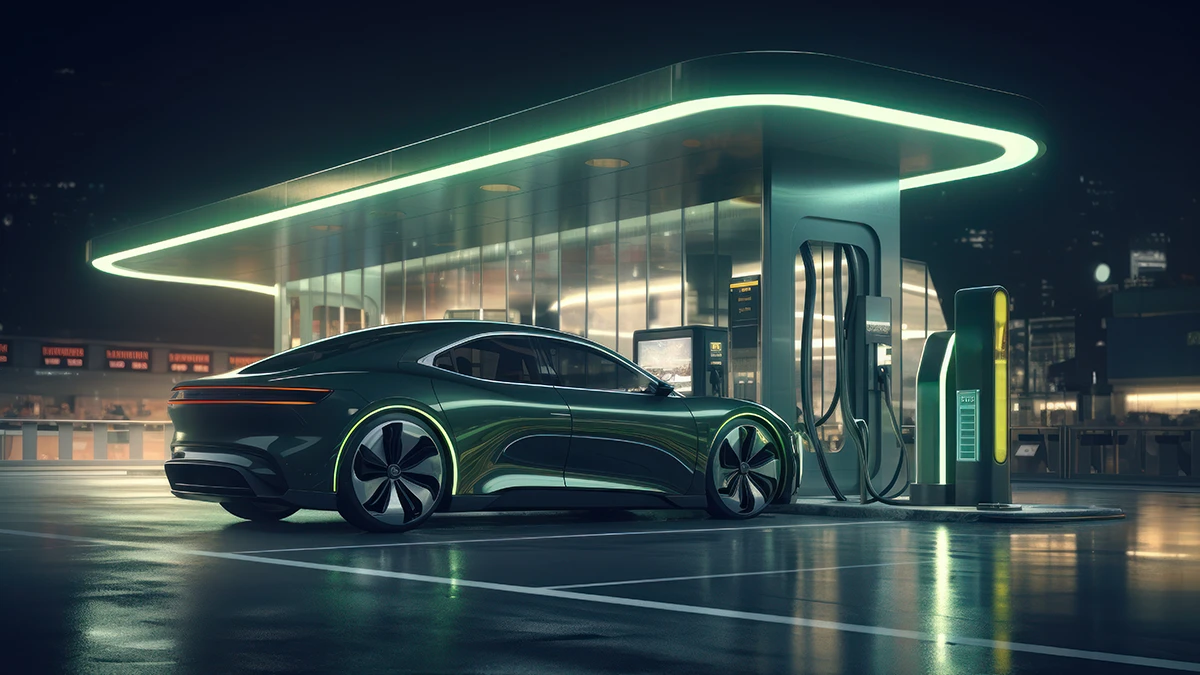
Tesla – Long Term Vision
An organization that perfectly demonstrates this is Tesla, Inc. Here’s how:
- Long term vision: Elon Musk’s master plan for Tesla is not just for a few years ahead but spans decades. It involved developing a high-priced luxury electric vehicle (Roadster), then using that money to develop a slightly lower-priced car (Model S and X), and finally, using that revenue to create an affordable, high-volume car (Model 3 and Y). This shows foresight and vision of the future of the company.
- Sustainability: From the get-go, Tesla promotes electric vehicles for a sustainable future. This shows their understanding of future energy needs and environmental concerns.
- Autopilot and full self-driving: Tesla is also heavily investing in AI to make self-driving cars a reality. By doing so, they are preparing for the future shift in car technology and setting themselves as industry leaders.
- Gigafactory and battery production: Recognizing the future need for high-capacity batteries for their cars and potentially for other renewable energy systems, Tesla has invested in building its battery production facility – the Gigafactory. This is future thinking regarding business (securing their supply chain) and technological innovation.
- Starlink project: Elon Musk is not stopping at electric vehicles. His project Starlink – an initiative to create a satellite network to provide internet connectivity worldwide – is another example of thinking about the larger, long-term picture.
All these examples show how Tesla uses futures thinking not just to remain competitive but to help shape the industry’s direction. They are not just reacting to the market but pre-empting future trends and needs and responding to them beforehand.

United Nations (UN) – Sustainable Development Goals (SDGs)
The United Nations (UN) provides a strong example of futures thinking through its Sustainable Development Goals (SDGs).
Recognizing humanity’s challenges and realizing the necessity of global cooperative action, the UN established 17 SDGs in 2015, which are intended to be achieved by 2030. These goals encompass various factors, from poverty and hunger to climate change and social inequality – the outcome of considered strategic forecasting and scenario planning.
The SDGs are designed to be a “blueprint to achieve a better and more sustainable future for all.” Here is how the UN used futures thinking in the development and implementation of the SDGs:
- Long term vision: The SDGs were developed with a long-term vision set for 15 years in the future. Recognizing the significant social, economic, and environmental challenges that needed tackling, the UN imagined a positive future where all these problems have been addressed.
- Broad inclusivity: The UN made a point of developing a set of goals that take into account the complexities and interconnectedness of global issues. To do this, they realized the need to address individual problems and envisage a future where the entire system works better for all.
- Scenarios and systems thinking: The goals were not arbitrarily chosen. They were carefully thought out, incorporating potential future scenarios, and then designed considering the whole system’s view. Understanding how each goal affects and interacts with others requires high futures thinking.
- Global collaboration: Part of the futures thinking in the SDGs involves understanding that these are common, globally shared challenges. Therefore, they require collaborative and collective action from all countries. The future the UN has envisioned involves a concerted global effort toward these common goals.
- Regular review and adjustments: The UN recognizes that unpredictability is inevitable even with a robust futures-thinking approach. That is why the SDGs include mechanisms for regular review and adjustment based on changes in global situations, trends, and forecasts.
As a result, the UN, through the SDGs, is working with all member nations, employing futures thinking to transform the world for the better by 2030.

Government of Singapore – Water Management Strategy
A good example of futures thinking in action is how Singapore’s government approached its water management strategy. Being a small island city without natural aquifers or lakes and with a rainfall pattern that is not dependable, Singapore faces a significant challenge in water supply management.
However, using a futures thinking approach, they developed a robust and forward-thinking water management strategy:
- Long term vision: Singapore’s government recognized the long-term challenge of water scarcity and understood the need for long-term planning.
- Four national taps strategy: The plan includes new water sources from local catchment areas, imported water, highly-purified reclaimed water known as NEWater, and desalinated water. These taps can be turned on and off as required, making the water supply resilient to future changes such as climate change or geopolitical issues.
- Changing consumption patterns: Singapore also promoted water conservation among its citizens by increasing awareness and compelling them to consider their futures in a world affected by water shortages. This included campaigns and measures like progressive water pricing, where those who consume more water pay more per water unit.
- Technological innovation: Recognizing that conventional water treatment methods might not suffice, Singapore invested heavily in R&D to develop advanced water treatment technologies, such as reverse-osmosis techniques, and joined hands with private firms to implement them.
- Global collaboration: Knowing that the challenge of water scarcity extends beyond national borders, Singapore has sought to share its expertise with other countries and learn from their experiences through global platforms like the Singapore International Water Week.
This approach from Singapore’s government shows how futures thinking – involving strategic anticipation, scenario planning, system thinking, and active adaptation – can be used to transform a significant challenge into an area of strength and opportunity. Through this process, Singapore has moved from a precarious dependency on water imports to becoming a global leader in water management.
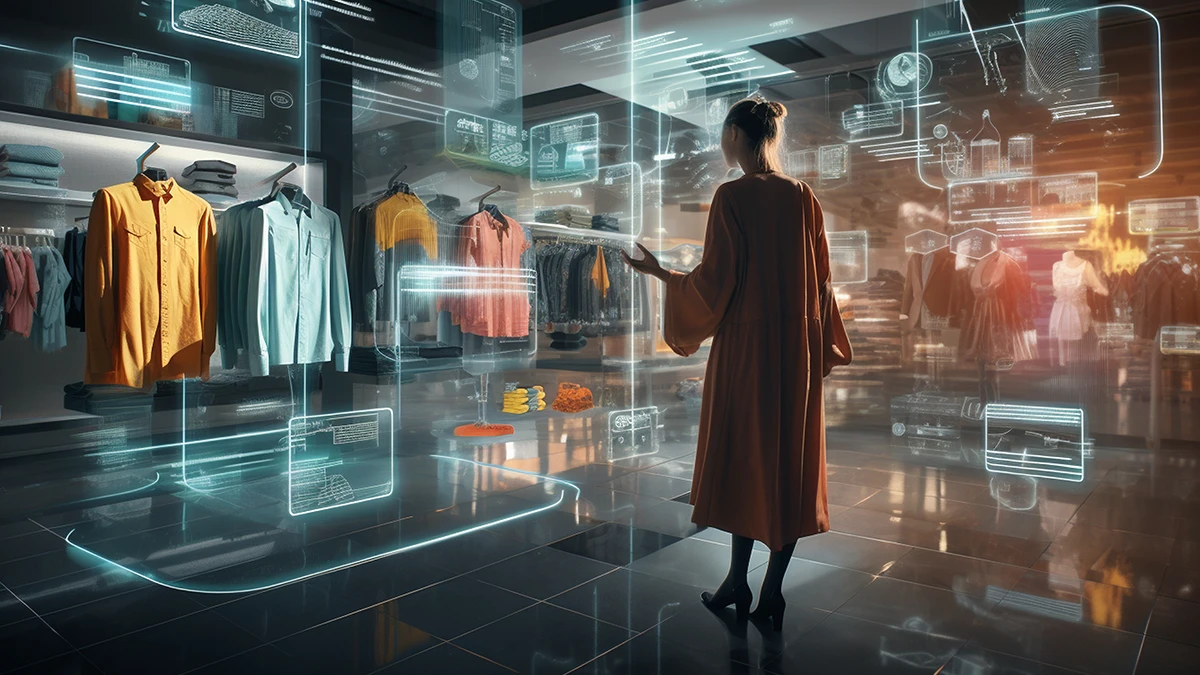
Amazon – Forward Thinking Strategy
One excellent example is how Amazon has handled its growth and development over the years. From being an online bookstore to one of the world’s largest e-commerce and tech companies, Amazon attributes its success to its forward-thinking strategies:
- Long term vision: Amazon started as an online bookstore in 1994, but Jeff Bezos had a long-term vision beyond books. He soon expanded to other products, envisioning Amazon as the everything store, disrupting the whole retail industry.
- Continuous innovation: Amazon has continually invested in R&D, predicting future consumer needs. The creation of Kindle, when physical books were still prominent, demonstrates Amazon’s foresight to see the potential of digital reading.
- Predictive analytics: Using advanced algorithms and AI, Amazon predicts what customers may need or want based on their previous searches, purchases, and browsing behaviors. This proactive approach strengthens customer relationships and ensures increased customer loyalty.
- Diversification: Recognizing the future scope of cloud computing, Amazon launched AWS (Amazon Web Services) in 2006, much before other tech giants entered the field. AWS now forms a significant part of Amazon’s revenue and continues to grow.
- Anticipating future trends: Amazon was among the first companies to invest heavily in drone delivery technology, recognizing its potential to revolutionize logistics.
- Amazon Go: Amazon’s innovative cashier-less stores exhibit a future-oriented retail model, maximizing customer convenience and efficiency.
All these actions are based on Amazon’s capacity to envisage future trends and customer needs, placing it ahead of most of its competition. The company’s growth and diversification are evidence that futures thinking is fundamental to its strategy and overall business model.
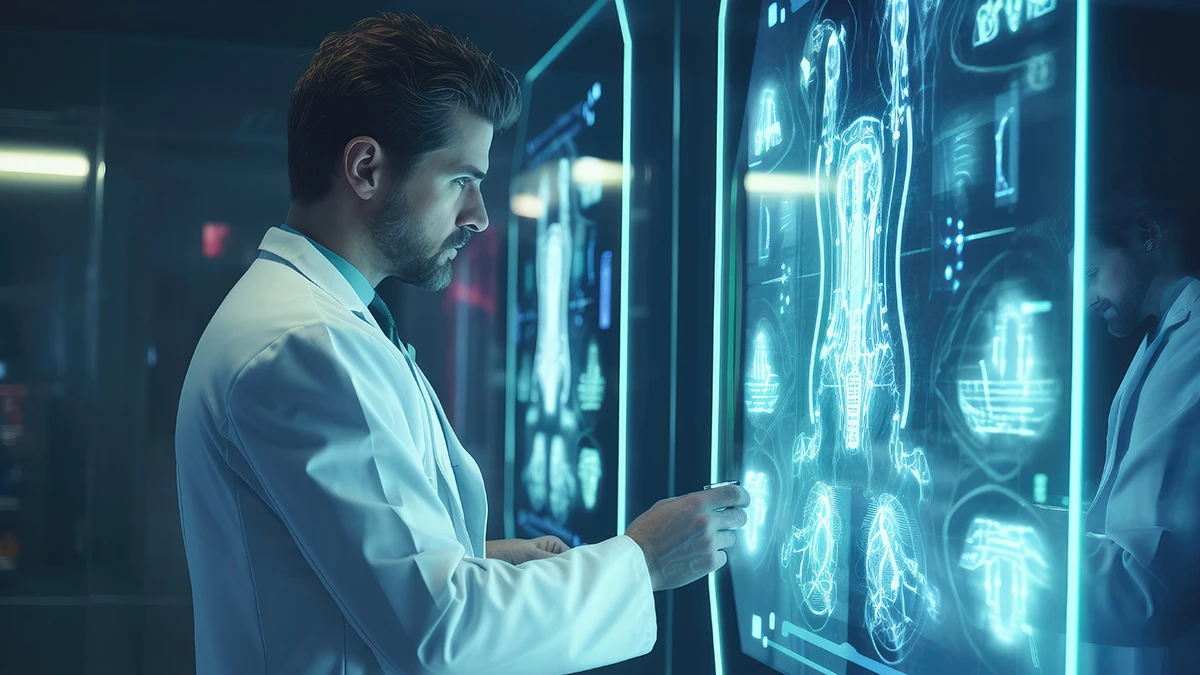
Novo Nordisk – Futures Thinking Strategy
Futures thinking can also be seen in action in the field of healthcare. An example is how the Danish pharmaceutical company Novo Nordisk, approaches its business strategy.
- Recognition of long term trends: Novo Nordisk is one of the world’s leading companies in diabetes care. Recognizing the increasing global rates of diabetes and other chronic illnesses, they have dedicated significant resources to research and develop new treatments.
- Scenario planning: Novo Nordisk uses future scenarios to explore how trends like population aging, the rise of obesity, and evolving healthcare technologies might influence their business in the long run.
- Investment in innovation: Since the future of healthcare will be closely tied to technology, Novo Nordisk invests heavily in digital health solutions. For example, they have created smart insulin pens that can record and share data on insulin dosage, providing better treatment customization and improved patient outcomes.
- Sustainability commitments: Novo Nordisk is also thinking about the future regarding sustainability. They have committed to being entirely carbon-neutral in their operations by 2030 and to have zero carbon footprint from their entire value chain by 2040, recognizing the long-term impacts of climate change on business and health.
- Prediction and prevention: Novo Nordisk is also pioneering an approach called “Cities Changing Diabetes,” which aims to map the problem of urban diabetes and predict future trends. By understanding the future trajectory of the disease, interventions can be developed to prevent its rise.
Through these actions, Novo Nordisk provides an excellent example of how futures thinking can guide a company’s strategy in a rapidly changing world while improving millions of individuals’ health and well-being worldwide.

Shell – Advanced Scenario Planning
An example in progress can be seen in how Shell Oil Company strategizes its business operations. Shell uses a scenario planning approach to prepare for developments in the energy sector and the broader geopolitical and economic landscape.
- Scenario planning: Since the 1970s, Shell has been known for creating ‘scenarios’ that imagine different pathways for the world’s future. Despite not knowing precisely what will happen, developing several plausible future scenarios allows Shell to test its current business strategy against diverse potential outcomes.
- Transition to cleaner energy: Shell recognizes a long-term global shift towards sustainable energy, even as an oil company. The company has started investing in different forms of renewable energy, such as wind and solar, and electric vehicle charging infrastructure. They plan to become a net-zero emissions energy business by 2050 or sooner.
- Technology and innovation: Shell is using futures thinking for innovation and technology reimagination. They are exploring future trends that could impact the energy sector, such as the growth of AI and the Internet of Things.
- Gas as a transition fuel: Understanding the necessity to reduce carbon emissions and recognizing that alternatives like solar and wind can not immediately replace all energy needs, Shell is investing in natural gas as a less carbon-intensive option for the short- to mid-term.
- Addressing future challenges: Shell’s scenario planning includes looking at potential challenges and how they might respond. For example, they have considered scenarios with extreme weather conditions due to climate change and how it might affect their offshore drilling operations.
Through these strategies, Shell uses futures thinking to steer a huge company in a rapidly changing and unpredictable world, balancing shareholder interests, customer needs, and the global need for sustainability.
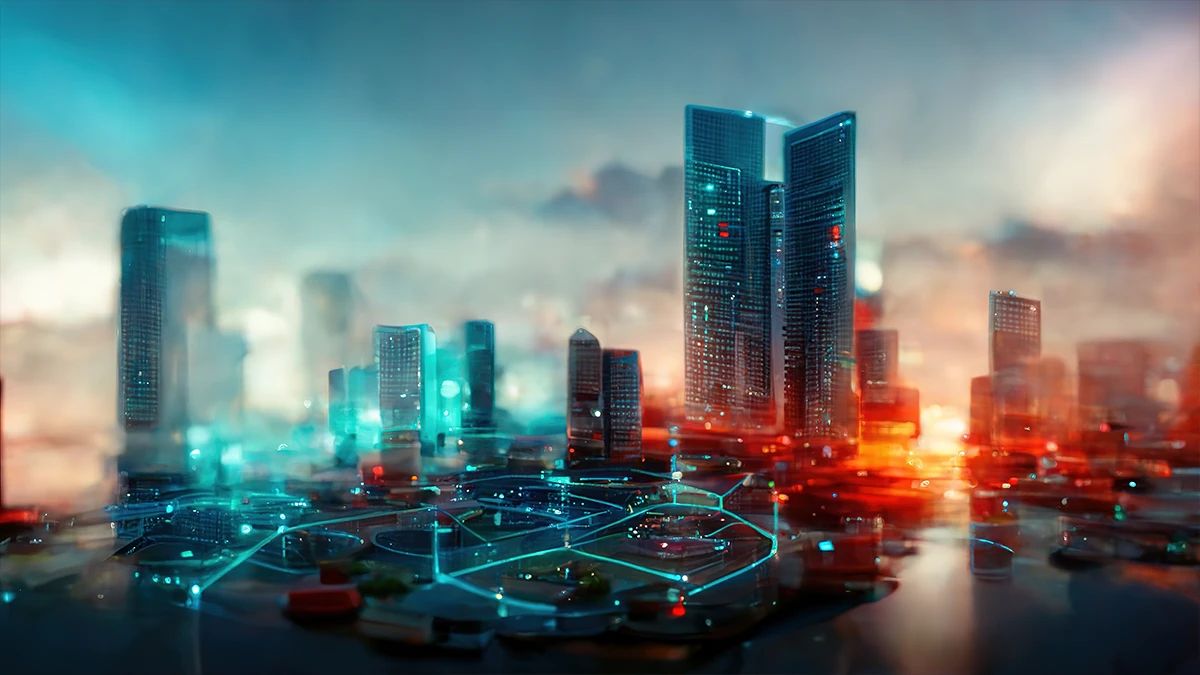
Government of India – Smart Cities Mission
A major initiative showcasing futures thinking is the ‘Smart Cities Mission’ launched by the Government of India. This mission represents India’s efforts to create urban areas that are sustainable, inclusive, and technologically advanced as a response to the rapid urbanization taking place in the country.
- Long term vision: The Indian government foresaw the challenges of rapid urbanization – uneven development, inadequate infrastructure and services, and environmental degradation. The Smart Cities Mission was launched with a long term vision to tackle these issues using technology and sustainable urban planning.
- Smart solutions: The project involves building smart cities with innovative solutions like smart meters, e-governance and citizen participation, waste management systems, efficient urban mobility, and public transport. These solutions are designed with future challenges and trends in mind.
- Inclusivity: The initiative acknowledges that future cities must also be inclusive, so affordable housing is one of its key components. By including it in their plan, the government shows foresight about the rising real estate prices and the resulting housing challenges.
- Sustainable environment: Emphasizing a sustainable future, elements like robust water supply, waste management, and efficient energy sources are crucial to the smart cities proposal.
- Digital innovation: The project heavily incorporates digital innovation, knowing that Information and Communications Technology (ICT) will play a significant part in the future. Elements include digital payments for services, e-governance, digital information boards, and public wifi spots.
- Learning and adapting: The government has kept room for future learning and for the cities to evolve based on acquired knowledge and changing circumstances.
The ‘Smart Cities Mission’ is an excellent example of how futures thinking pertains to businesses, governments, and public policy. By systematically exploring potential futures, it is possible to create urban environments that could be more resilient, sustainable, and suited to the changing needs of their residents.

NASA – Artemis Moon Program
The resurgence of NASA’s Artemis Moon Program best illustrates futures thinking in action within the context of space exploration. Here is how:
- Long term vision: NASA has a defined, long-term goal of returning to the moon, maintaining a consistent human presence there, and using it as a stepping stone for human exploration of Mars and beyond.
- International cooperation and inclusivity: The Artemis program functions under the groundbreaking Artemis Accords, a series of principles and guidelines for space exploration and cooperation for sustainable and peaceful future activities. This act recognizes the future necessity for global collaboration in tackling challenges in space exploration.
- Technological innovation: Understanding the need to evolve technology for future space missions, Artemis will deploy new technologies, systems, and research techniques. This includes advanced spacecraft like the Orion, a new generation of lunar landers and rovers, and the development of the Lunar Gateway. This small spaceship will orbit the Moon and serve as a home base for human and robotic missions.
- Sustainability: NASA aims to explore the Moon in ways that could support future crewed missions – not only on the Moon but also on Mars. This includes extracting and using lunar resources like water, operational practices like ‘in-situ resource utilization’, and procedures to minimize space debris, essentially providing a sustainable model for future space exploration.
- Economic development: NASA is establishing a new lunar economy by buying services rather than owning and operating hardware. The new approach of partnering with commercial companies for lunar landing services, human space transportation, and more unlocks unprecedented economic growth and technological innovation opportunities.
Through the Artemis program, NASA leverages futures thinking to not only accomplish its mission of landing humans on the Moon but also to set the stage for further exploration of the solar system, commercialization of space, and sustainable practices. The program is a fitting example of an organization looking ahead and preparing for future scenarios, ensuring long-term success and growth.
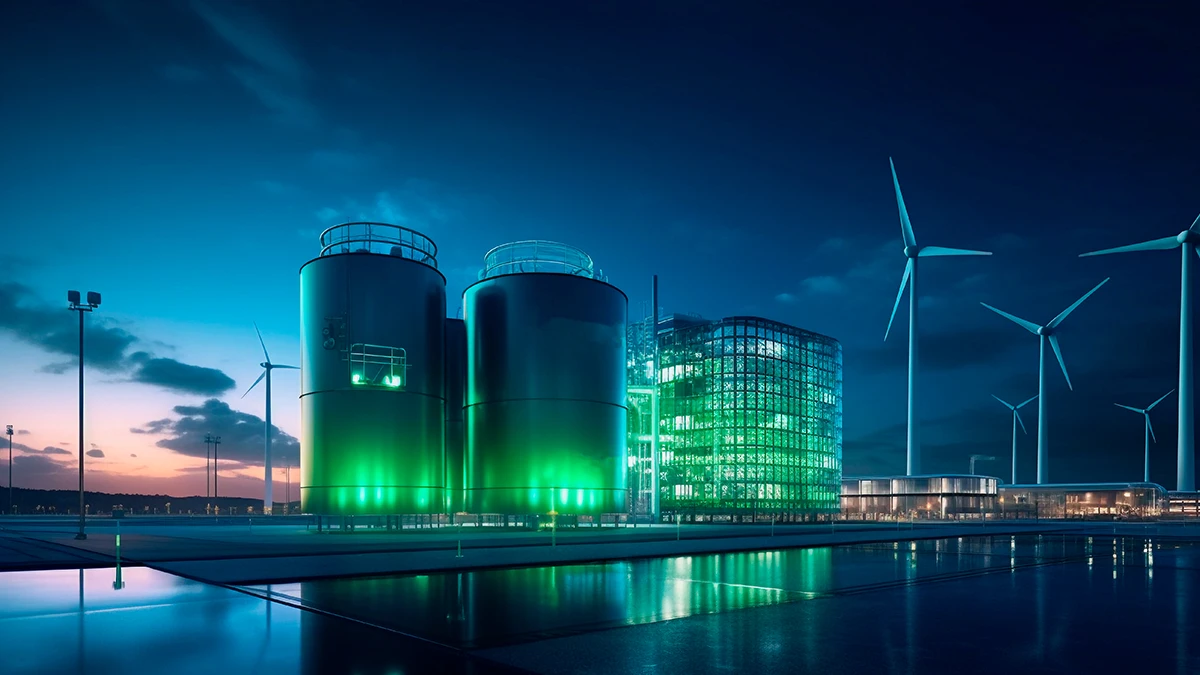
Equinor – Strategic Forcast
The Norwegian energy company Equinor’s approach to future thinking is seen in its ambition to lead the energy transition from fossil fuels to renewable resources.
- Long term vision: Equinor’s primary business is oil and gas production, but it understands the long term predictions of the eventual decline of the oil industry and the increasing demand for clean energy. Therefore, Equinor has set a long-term ambition to be a net-zero company by 2050, including emissions from production and final energy consumption.
- Scenario analysis: Equinor publishes its Energy Perspectives annually, outlining possible scenarios for the global energy transition. This practice of scenario planning helps Equinor understand the implications of different paths to a sustainable future and prepares the company to adapt its business accordingly.
- Investment in renewable energy: Equinor heavily invests in various renewable energy sources, like wind and solar energy. Its offshore wind projects in the UK can power over a million homes. The company is also exploring opportunities in carbon capture and storage (CCS) and hydrogen.
- Technological innovation: The company emphasizes technological innovation to reduce carbon dioxide emissions from oil and gas production processes. This includes using subsea compression technology that increases gas recovery rate, reducing CO2 intensity.
- Collaboration: Equinor acknowledges the need to collaborate with stakeholders and joins other corporate leaders in supporting climate-focused policies. It also collaborates with universities for research and innovation and is part of industry initiatives to reduce environmental impact.
By using futures thinking to switch from traditional oil production to renewable forms of energy, Equinor is working towards facing the challenges of climate change while ensuring the company’s continued profitability in an evolving energy market.

IKEA – Future Oriented Design Strategy
IKEA, the world’s largest furniture retailer, provides a compelling example of futures thinking in action. Understanding emerging trends and future needs, IKEA consistently adapts its business strategies and designs.
- Long term vision: IKEA’s vision is to “create a better everyday life for many people.” This sentiment drives their future-oriented perspective by focusing on solutions catering to future living situations and user needs, anticipating lifestyle and consumer behavior changes.
- Democratic design: IKEA follows a democratic approach, providing an ideal blend of form, function, quality, sustainability, and low price. This design philosophy exemplifies the company’s forethought by considering future environmental impact and evolving consumer needs and aesthetics.
- Sustainability and climate change: Acknowledging the escalating environmental crisis, IKEA has pledged to become climate-positive by 2030, reducing more greenhouse gas emissions than the IKEA value chain emits while growing the IKEA business.
- Future living lab: IKEA created Space10, a future-living lab, to investigate the future of urban living, identify societal changes, and offer products that cater to future macro trends. Projects like “The Growroom” (a pavilion for growing food sustainably in neighborhoods) or “SolarVille” (a prototype for solar energy usage and blockchain technology) are directly borne out of this futures-oriented approach.
- Digital transformation: Recognizing the massive shift in retail towards online shopping, IKEA is investing in expanding its digital presence and e-commerce capabilities, along with features like mobile ordering and augmented reality apps to envision furniture in homes.
By applying futures thinking to every aspect of their business, from product design, and supply chain management to in-store and online customer experience, IKEA sets itself up to stay relevant and appealing to its customers now and in the future.
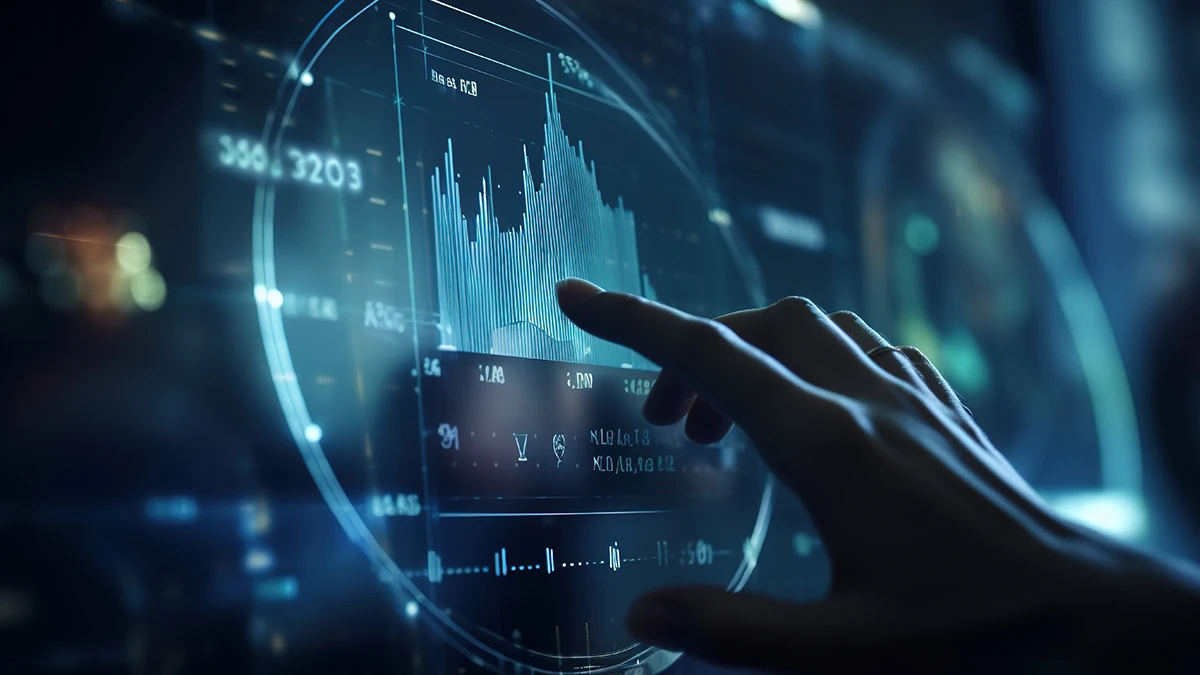
JPMorgan Chase & Co. – Proactive Future Planning
A significant example of futures thinking can be seen in the approach of financial giant JPMorgan Chase & Co, particularly relating to the rapid evolution of FinTech and changing user behavior.
- Embracing digitalization: Recognizing the need to adapt to a future where digital transactions are the norm, JPMorgan has consistently focused on developing and refining its mobile and digital banking platforms. They have developed innovative features such as Touch ID, customized alerts, seamless transfers, and bill pay.
- Investing in technology: The bank has regularly invested billions in technology advancements yearly. They have made significant efforts to leverage machine learning, blockchain, and big data analytics – elements leading the future of the financial industry.
- Fintech partnerships: JPMorgan has been strengthening relationships with fintech companies, startups, and innovation ecosystems to enhance their products/services, learn from innovation, and prepare for the future landscape of the industry.
- Cybersecurity: JPMorgan has invested in cybersecurity to protect against future digital threats. They understand that digital fraud and cyber threats will continue to evolve and remain a significant challenge in the finance industry.
- Sustainability: Recognizing the threats and risks posed by climate change, JPMorgan has committed to facilitating $200 billion in clean financing through 2025. They also aim to source renewable energy for 100% of their power needs by 2020 end, set carbon intensity targets for their financing portfolio, and restrict financing for coal and Arctic oil and gas.
This approach taken by JPMorgan Chase & Co. indicates that they are responding to current trends and actively planning for the future, ensuring they stay on the cutting edge of the finance industry.
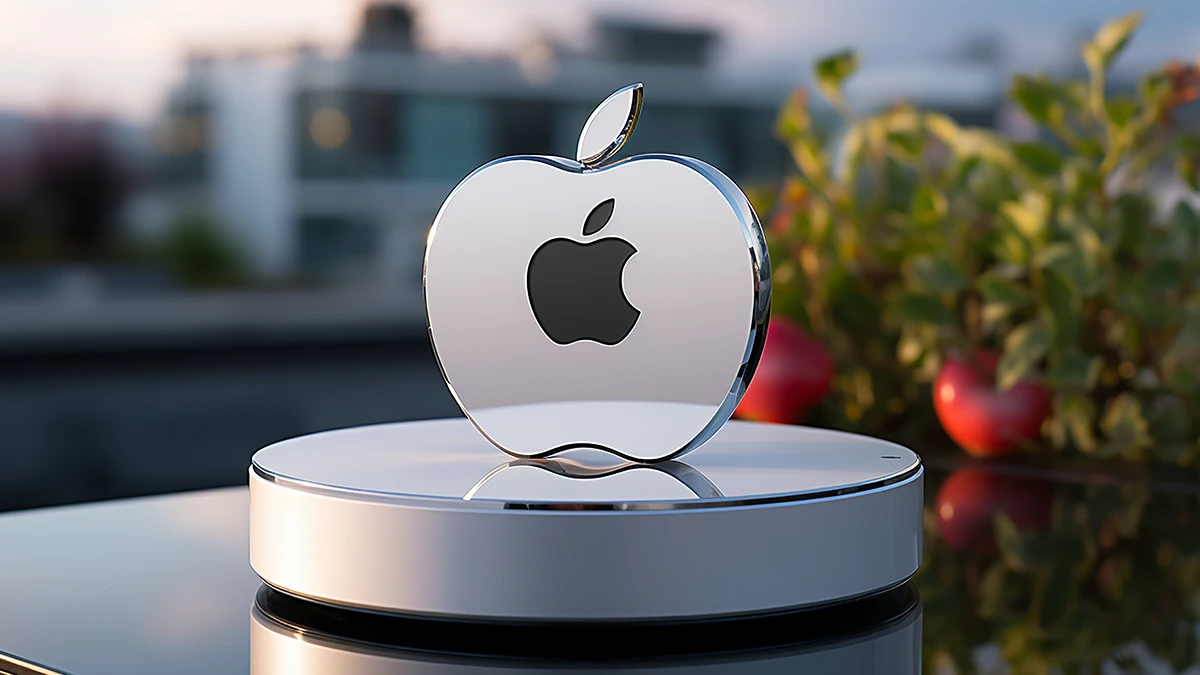
Apple – Shaping the Consumer Behavior
Apple, the multinational technology giant, also provides an excellent example of futures thinking. Their ability to envision and build towards the future has made them one of the world’s most successful and influential companies.
- Anticipating consumer needs: Apple is known for creating products that consumers did not even know they needed until they existed. From the first Mac to the iPod, iPhone, iPad, and services like Apple Pay and Apple Watch, Apple has consistently showcased its ability to predict and shape future consumer behavior.
- Constant innovation: Apple continually invests in research and development to stay ahead of the curve. They are frequently improving and refining their products, ensuring they remain at the forefront of technology and design.
- Attention to user experience: Apple pays close attention to the user experience. They take into account how the use of technology will evolve, focusing on making it as smooth and intuitive as possible.
- Diversification: Apple’s business strategy has evolved from focusing predominantly on personal computers to various consumer electronics and services. Recognizing the growth potential of different markets, the company has strategically diversified its offerings to include music streaming, cloud storage, and financial services.
- Sustainability: Apple has committed to becoming 100% carbon neutral for its supply chain and products by 2030. This commitment shows foresight in understanding the impacts and importance of climate change for the future of businesses.
- Solving future problems: Apple is investing in new areas like augmented reality (AR) and electric, autonomous vehicles, highlighting its ongoing efforts to envision and create solutions for future needs and problems.
Apple’s futures thinking is evident in its innovative approach, commitment to sustainability, and continuous exploration of new markets and technologies. Their success epitomizes the benefits of incorporating futures thinking into a business strategy.

The Walt Disney Company – Entertainment Leader Today and Tomorrow
The Walt Disney Company is a compelling example of a corporation deeply invested in future-oriented planning. Disney’s foresightful strategies in its media networks, parks, experiences, products, and more have continually positioned it as the entertainment industry’s leader.
- Anticipating future trends: Disney’s successes often involve anticipating future developments in entertainment. An excellent example is Disney’s early adoption of streaming technology with the creation of Disney Plus. Recognizing the shift from traditional television to over-the-top media services, Disney Plus was launched and swiftly gained millions of subscriptions.
- Strategic acquisitions: Understanding the evolving dynamics of the entertainment industry, Disney made significant acquisitions that prepared it for future growth. This includes Pixar, Marvel, Lucasfilm, and 21st Century Fox, bringing a vast array of popular content under one umbrella, diversifying its portfolio, and improving the potential for future cross-integration of franchises.
- Technological innovation: Using innovative technology has always been at the core of Disney theme parks. Recently, they announced plans to revolutionize their parks’ experiences even further by introducing Disney Genie, a personalized, AI-powered trip planning app designed to create a more seamless and tailored visit to Disney parks.
- Sustainability commitment: Disney has made notable commitments to reduce its environmental footprint. They have set targets around waste and emissions reduction, using their platform to educate and inspire environmental stewardship. They also incorporate sustainable operations in their cruise lines, parks, and resorts.
- Future workforce skills: Recognizing the future of work and the necessary skills for a future workforce, Disney has cooperative education initiatives providing students with valuable, real-world work experience in technology, arts, and media.
These strategic decisions reflect Disney’s commitment to futures thinking, proactively shaping its business model according to future trends, technological advancements, environmental needs, and evolving customer preferences.
Conclusion
To wrap things up, the concept of looking ahead and planning with the future in mind spans various fields and sectors, proving itself as a key ingredient behind the success of many leading organizations and initiatives. From the innovative steps Tesla is taking to revolutionize transportation and energy, to the global efforts of the United Nations aiming for a sustainable future through its Development Goals, the power of forward-thinking is evident. These stories, along with others mentioned, highlight a shared dedication to not just reacting to the world as it changes but actively shaping what comes next.
The essence of futures thinking – being able to foresee upcoming trends, engaging thoroughly in planning for different scenarios, and crafting visionary strategies – is what distinguishes these leaders. It is about more than just surviving the unknown; it is about thriving in it, steering towards sustainability, inclusivity, and innovation.
As the world grows more complex and interconnected, the insights from these examples stress how crucial it is to adopt a futures-oriented approach. This mindset is not just about safeguarding against challenges but about seizing opportunities to make a significant impact. For any organization looking to make its mark, integrating this way of thinking into its strategy can lead to breakthrough innovations and ensure they remain relevant and resilient through times of change.
In essence, futures thinking is an invaluable compass for navigating the uncertainty of tomorrow. It is about creating a blueprint for success that not only anticipates what is coming but also prepares to meet it head-on. By drawing inspiration from these pioneering efforts, other organizations can learn to weave futures thinking into their DNA, setting the stage for a legacy of innovation, growth, and lasting influence in their industries and beyond.
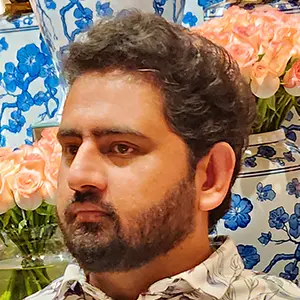
Learner-in-Chief at Future Disruptor. A futurist, entrepreneur, and management consultant, who is passionate about learning, researching, experimenting, and building solutions through ideas and technologies that will shape our future.
Subscribe to the Future Disruptor newsletter.

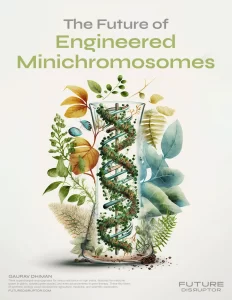
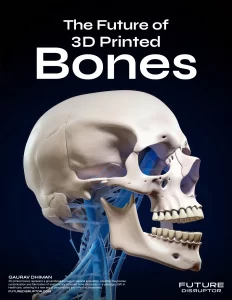
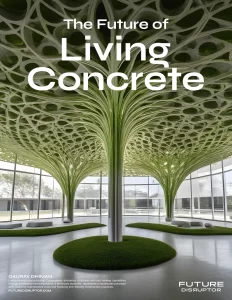
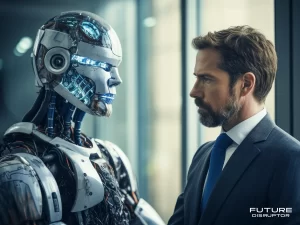
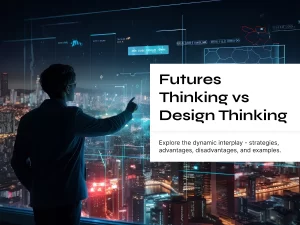
Leave a Reply